
views
X
Research source
By definition, a square is a four-sided shape with four straight sides of equal length, and four right (90°) angles.[2]
X
Research source
Since all four sides are the same length, this makes finding the perimeter of a square really easy! This article will first show you how to calculate the perimeter of a square if you know the length of one side. It will then show you how to find the perimeter of a square if you only know is its area, and finally, it will teach you to find the perimeter of a square that is inscribed in a circle with a known radius.
Calculating the Perimeter When One Side Length is Known
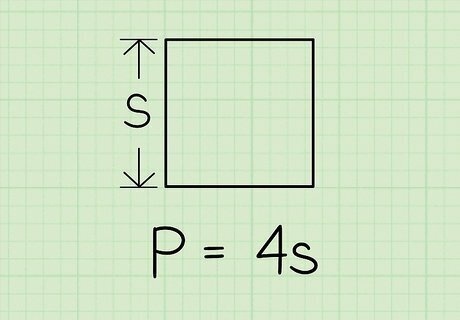
Recall the formula for the perimeter of a square. For a square of side length S, the perimeter is simply four times the side length: P=4s.
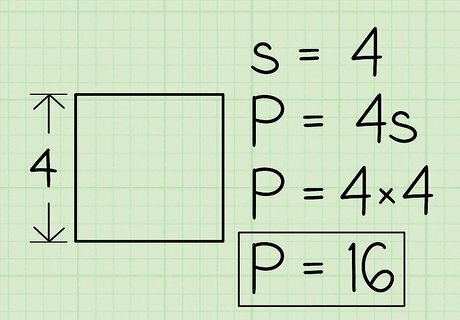
Determine the length of one side, and multiply it by 4 to find the perimeter. Depending on the assignment, you may need to measure the side with a ruler, or look at other information on the page to determine the side length. Here are some examples of perimeter calculations: If your square has a side length of 4, then P = 4 * 4, or 16. If your square has a side length of 6, its P = 4 * 6, or 24.
Calculating the Perimeter When Area is Known
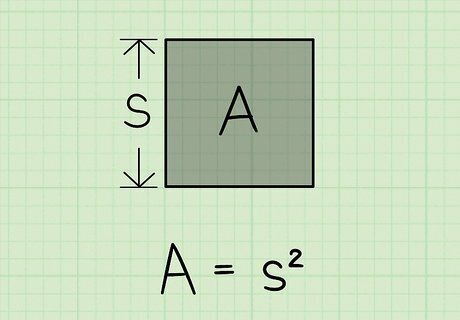
Know the formula for the area of a square. The area of any rectangle (remember, squares are special rectangles) is defined as its base times its height. Since the base and the height of a square are the same length, the area of a square with side length s is s*s, or A = s.

Find the square root of the area. The square root of the area will give you the length of one of the sides of the square. For most numbers, you will need to use a calculator to find the square root, by first typing in the value of the area, followed by the square root (√) key. You can also learn to Calculate a Square Root by Hand! If the area of your square is 20, then the side length s =√20, or 4.472. If the area of the square is 25, then s = √25, or 5.

Multiply the side length by 4 to find the perimeter. Take the side length s you just calculated and plug it into the perimeter formula, P = 4s. The result will be the perimeter of your square! For the square with area 20 and side length 4.472, the perimeter P = 4 * 4.472, or 17.888. For the square with area 25 and side length 5, P = 4 * 5, or 20.
Calculating the Perimeter of a Square Inscribed in a Circle of Known Radius
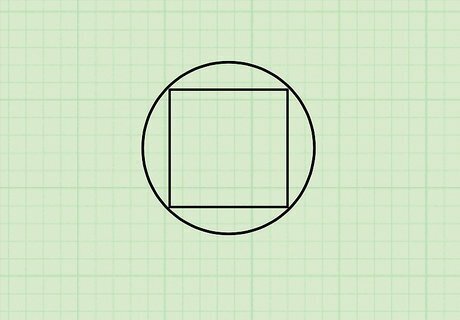
Understand what an inscribed square is. Inscribed shapes come up fairly often on standardized tests like the GMAT and GRE, so it is important to know what they are. A square inscribed in a circle is a square that is drawn inside of the circle, so that all four vertices (corners) lie on the edge of the circle.
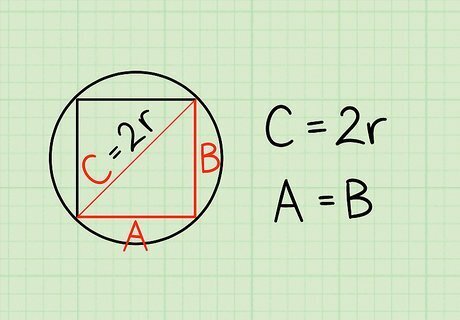
Recognize the relationship between the radius of the circle, and the side length of the square. The distance from the center of an inscribed square to each of its corners is equal to the radius of the circle. To find the length of s, we must first imagine cutting the square in half diagonally to form two right triangles. Each of these triangles will have equal sides a and b and hypotenuse c, which we know is equal to two times the radius of the circle, or 2r.

Use the Pythagorean Theorem to find the side length of the square. The Pythagorean Theorem states that for any right triangle with sides a and b and hypotenuse c, a + b = c . Since sides a and b are equal (remember, we are still dealing with a square!) and we know that c = 2r, we can write out the equation and simplify the equation to find the side length as follows: a + a = (2r), now simplify the expressions: 2a = 4r, now divide both sides by 2: a = 2r, now take the square root of each side: a = √(2r) = √2r. Our side length s for the inscribed square = √2r. EXPERT TIP Joseph Meyer Joseph Meyer Math Teacher Joseph Meyer is a High School Math Teacher based in Pittsburgh, Pennsylvania. He is an educator at City Charter High School, where he has been teaching for over 7 years. Joseph is also the founder of Sandbox Math, an online learning community dedicated to helping students succeed in Algebra. His site is set apart by its focus on fostering genuine comprehension through step-by-step understanding (instead of just getting the correct final answer), enabling learners to identify and overcome misunderstandings and confidently take on any test they face. He received his MA in Physics from Case Western Reserve University and his BA in Physics from Baldwin Wallace University. Joseph Meyer Joseph Meyer Math Teacher Use this visual trick to understand the Pythagorean Theorem. Imagine a right triangle with squares constructed on each leg and the hypotenuse. by rearranging the smaller squares within the larger square, the areas of the smaller squares (a² and b²) will add up visually to the area of the larger square (c²).
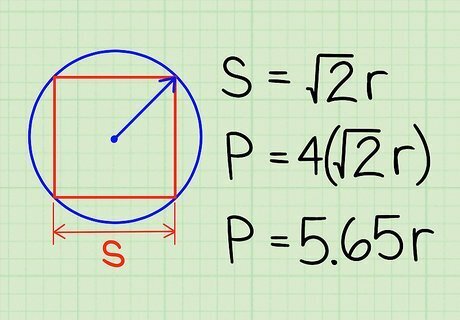
Multiply the side length of the square by four to find the perimeter. In this case, the perimeter of the square P = 4√2r. The perimeter of any square inscribed in a circle with radius r is defined as P = 5.657r!
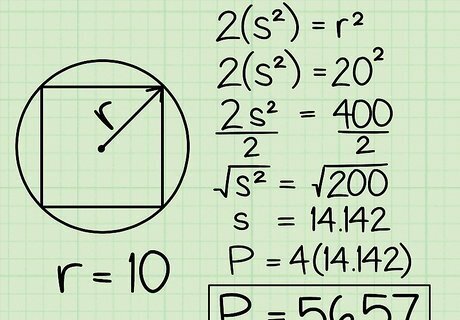
Solve an example equation. Consider a square inscribed in a circle with radius 10. That means that the diagonal of this square = 2(10), or 20. Using the Pythagorean Theorem, we know that 2a = 20, so 2a = 400. Now divide both sides in half to find that a = 200. Then take the square root of each side to find that a = 14.142. Multiply this by 4, and you will find the perimeter of your square: P = 56.57. Notice that you could have found the same thing by simply multiplying the radius, 10, by 5.657. 10 * 5.567 = 56.57, but that might be hard to remember on a test, so it's better to memorize the process we used to get there.













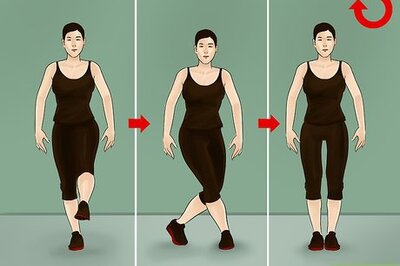




Comments
0 comment